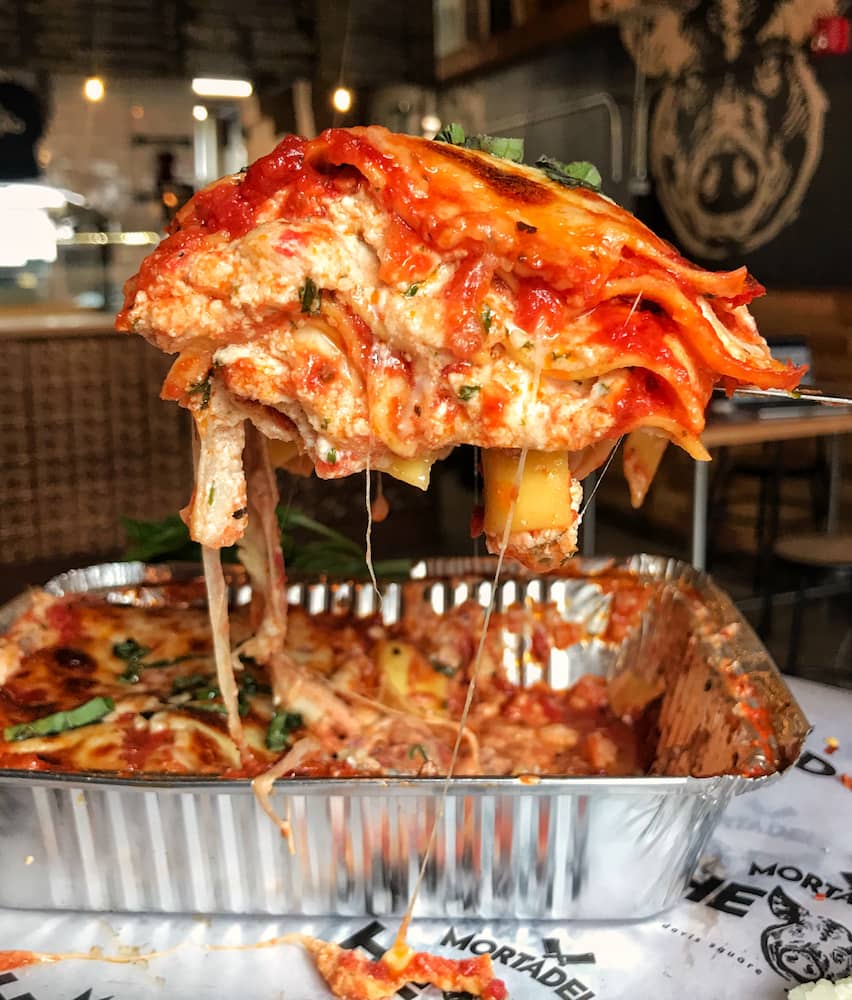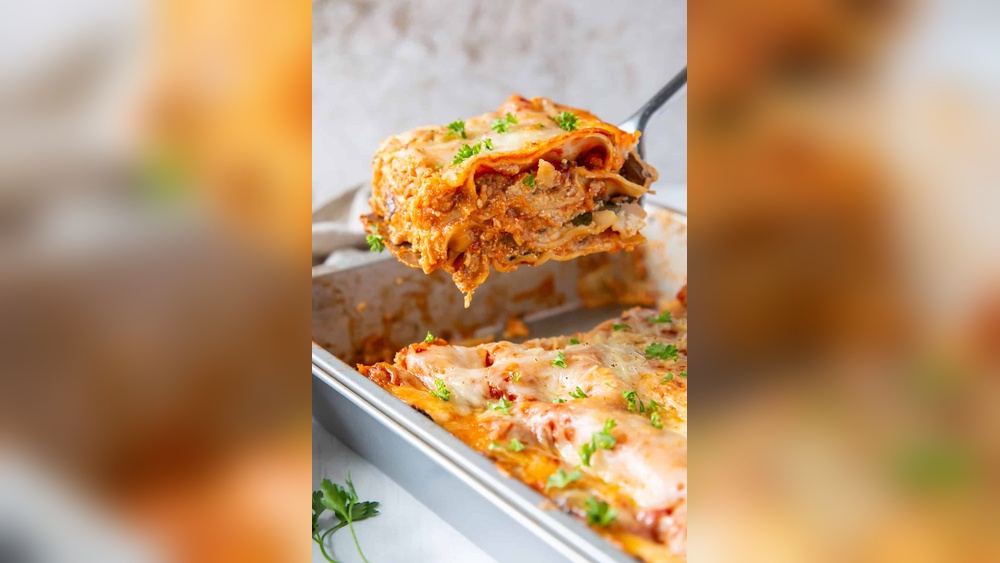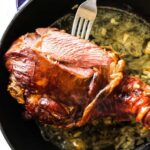Craving a hearty, comforting meal but short on time? Frozen lasagna is your go-to solution.
But how do you cook frozen lasagna so it’s hot, cheesy, and perfectly cooked every time? Whether you’re using a classic oven, an air fryer, or even a toaster oven, this guide will walk you through simple, foolproof steps. You’ll learn easy tips to keep your lasagna moist, flavorful, and satisfying—without the guesswork or mess.
Ready to turn that frozen dish into a delicious dinner? Let’s get started!
Oven Cooking Basics
Preheat the oven to 375°F (190°C) for best results. This temperature helps the lasagna cook evenly. Remove the frozen lasagna from its packaging and place it in an oven-safe dish. Cover the dish tightly with aluminum foil to keep moisture inside.
Cooking time usually ranges from 60 to 90 minutes. Add about 20 minutes if the lasagna is very thick or large. Check the middle with a knife to see if it is hot and bubbling.
About 10 minutes before the end, take off the foil. This step helps the top cheese to turn golden and slightly crispy. Let the lasagna rest for 5 minutes after cooking to firm up before serving.

Air Fryer Method
Set the air fryer temperature to 350°F (175°C) for even cooking. Place the frozen lasagna in the air fryer basket, making sure it lays flat. Avoid stacking or folding to cook it well.
Cover the lasagna with foil if your air fryer allows. This helps keep moisture and prevents the top from burning. Remove the foil in the last 5 minutes to brown the cheese.
Check the lasagna every 10 minutes to monitor progress. Cooking time usually takes 25 to 30 minutes. Use a fork to test if it is hot inside.
Serve the lasagna hot. Let it rest for a few minutes before cutting. This lets the layers set and makes it easier to serve.
Microwave Tips
Use a microwave-safe dish to heat frozen lasagna safely. This prevents harmful chemicals from leaching into the food. Always cover the dish with a microwave-safe lid or plastic wrap. This helps to retain moisture and keeps the lasagna from drying out.
Stir or rotate the lasagna during cooking. This ensures even heating and avoids cold spots. Use a fork or spatula to gently mix or turn the dish halfway through.
Check the temperature often. The lasagna should be heated thoroughly to at least 165°F (74°C) for safety. Use a food thermometer to be sure.
Let the lasagna rest for a few minutes after microwaving. This allows the heat to spread evenly and the dish to cool slightly for safe eating.
No-defrost Cooking
Cooking frozen lasagna without defrosting is simple. Start by preheating your oven to 375°F (190°C). Place the frozen lasagna in a baking dish. Cover it tightly with foil to keep moisture inside and avoid drying out.
Cooking time should be extended by 30 to 45 minutes compared to fresh lasagna. This helps the heat reach the center and cook it fully. Remove the foil during the last 10 to 15 minutes to let the top brown nicely.
Adding extra sauce on top before baking can prevent dryness. Frozen lasagna sometimes loses moisture in the freezer. The sauce keeps it juicy and flavorful.
Freezing And Storage
Proper freezing starts with cooling the lasagna completely. Use airtight containers or wrap tightly with plastic wrap and foil. This prevents freezer burn and keeps flavors fresh.
Always label the package with the name and date before freezing. This helps track how long it has been stored. Frozen lasagna is best used within 3 months for optimal taste.
For thawing, place the lasagna in the refrigerator overnight. This is the safest way to thaw. Quick thawing can be done using the microwave on defrost mode, but watch carefully to avoid cooking.
Reheat by baking in the oven at 375°F (190°C). Cover with foil for the first part of baking to keep moisture. Remove foil near the end to brown the top. Internal temperature should reach 165°F (74°C) before serving.

Common Mistakes To Avoid
Removing the cover too early causes the lasagna to dry out. Keep the foil on for most of the cooking time. This traps heat and moisture inside. It helps the cheese melt properly and the noodles cook evenly.
Underestimating cooking time is a common error. Frozen lasagna needs more time than fresh ones. Check the package for recommended times and add extra minutes if needed. Always use a timer to avoid undercooking.
Skipping temperature checks can ruin the dish. Use a food thermometer to ensure the internal temperature reaches 165°F (74°C). This kills bacteria and makes sure the lasagna is hot all the way through.
| Wrong Cookware | Effect |
|---|---|
| Plastic Containers | May melt or release harmful chemicals |
| Thin Metal Pans | Cook unevenly and burn edges |
| Glass or Ceramic Dishes | Best for even cooking and heat retention |
Extra Tips For Best Results
Fresh cheese on top adds creamy flavor and melts nicely. Sprinkle mozzarella or parmesan before baking for extra taste. Let the lasagna rest for 10-15 minutes after cooking. This helps it set and makes slicing easier. Using a baking sheet under the dish catches spills and keeps your oven clean. Always check the internal temperature to ensure safety. The center should reach 165°F (74°C) for fully cooked lasagna. These simple tips help you enjoy a hot, tasty meal every time.

Frequently Asked Questions
Can You Cook Frozen Lasagna Without Defrosting?
Yes, you can cook frozen lasagna without defrosting. Cover it with foil and bake longer to ensure even cooking. Remove foil near the end for a browned top. Adding extra sauce helps prevent drying. Always check internal temperature for doneness before serving.
How Do You Cook Frozen Lasagna?
Preheat oven to 375°F (190°C). Cover frozen lasagna with foil. Bake for 60-75 minutes. Remove foil last 10 minutes to brown. Check internal temperature reaches 165°F (74°C) before serving.
Do You Bake Lasagna At 350 Or 375?
Bake lasagna at 350°F for even cooking and to prevent burning. Use 375°F only for shorter, crispier results.
How Long Does It Take To Bake A Frozen Lasagna At 350 Degrees?
Bake frozen lasagna at 350°F for 60 to 75 minutes. Cover with foil to keep it moist. Remove foil last 10 minutes to brown the top. Check internal temperature reaches 165°F before serving.
Conclusion
Cooking frozen lasagna is simple and saves time. Cover it with foil to keep moisture inside. Bake longer than fresh lasagna for even cooking. Check the center to ensure it’s hot and cooked through. Adding extra sauce can prevent dryness.
Let it rest a few minutes before serving. Enjoy a tasty meal without thawing first. Frozen lasagna makes dinner easy and satisfying every time.

Yes, working as , Food Blogger and Product Reviewer for last 6 years. Here you will get amazing deals for Smart kitchen products. I am your best source for the latest update in cooking trends. I provide insightful articles, reviews, and analysis on cutting-edge kitchen gadget. My mission is to empower readers with the knowledge they need to stay ahead in a rapidly evolving coking world. Join me as we explore the future of food technology and how it shapes our lives today and tomorrow.





